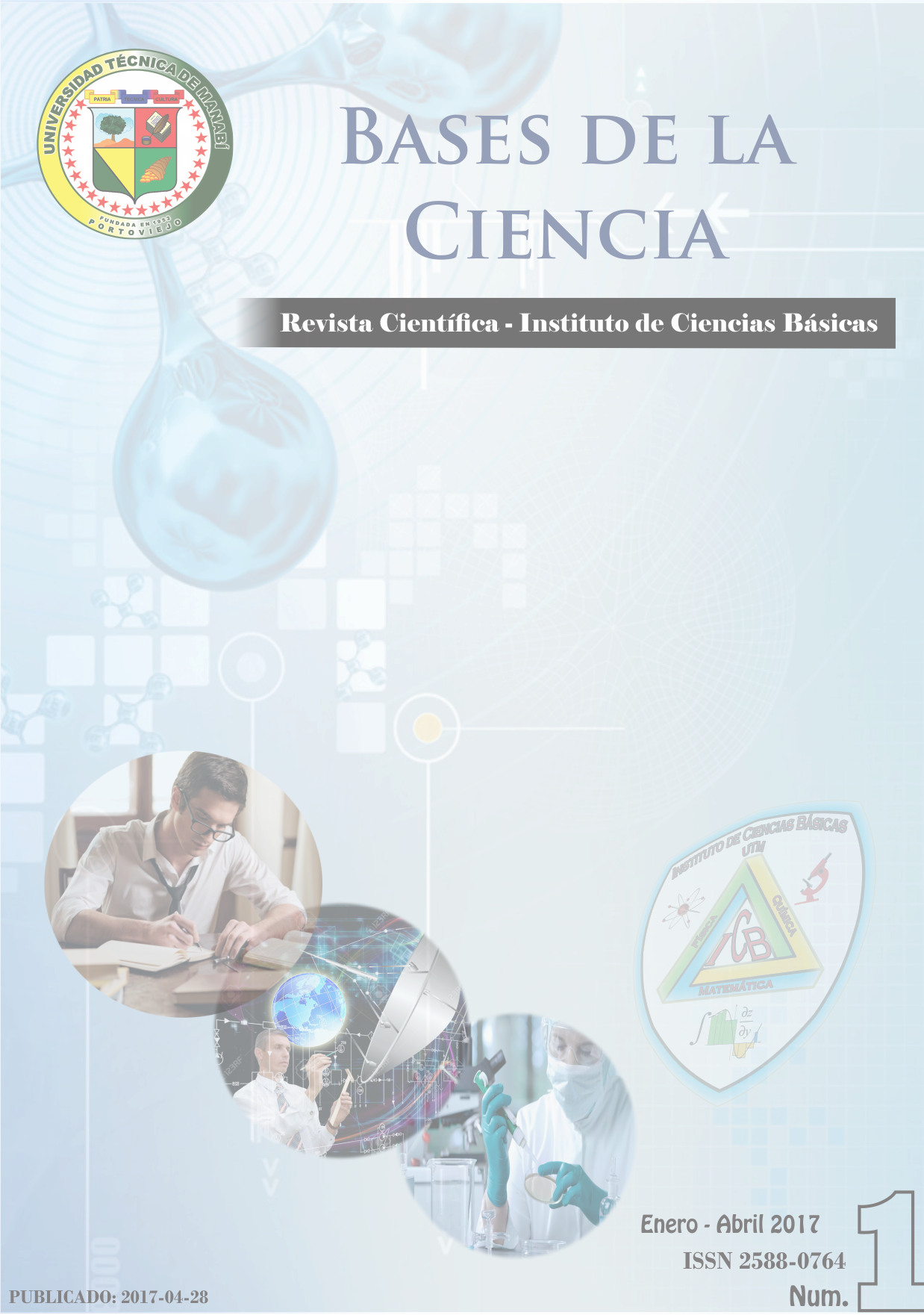Potencialidad de la provincia de Chimborazo para la producción de bioetanol a partir de la papa
Potentiality of the Chimborazo province for the production of bioethanol from the potato
DOI:
https://doi.org/10.33936/rev_bas_de_la_ciencia.v2i1.730Resumen
En Ecuador se propuso desde el 2010 como una meta a corto plazo incorporar 5% de bioetanol a la gasolina, a través del proyecto Ecopaís. Entre los objetivos de este proyecto está reducir la salida de divisas, ahorrar en subsidios, fomentar el empleo agrícola e industrial, disminuir las emisiones de CO2, entre otros. A la fecha la gasolina con 5% de bioetanol ha llegado solo a algunas provincias. Para lograr cubrir todo el país se requiere elevar la producción de bioetanol. La provincia de Chimborazo, ubicada en la sierra central de Ecuador, es una provincia con vocación agrícola, y en 2016 fue la provincia con mayor extensión de cultivo de papa en el país, duplicando la producción del rubro en comparación al 2015, lo que generó una sobreproducción y a su vez una disminución del 50% del precio de la papa en el mercado, ocasionando una significativa reducción de los ingresos a los productores. En la búsqueda de usos alternativos de la papa, se propuso evaluar la potencialidad de la provincia para la obtención de bioetanol a partir de este cultivo. Es por ello que se realizó una revisión de los principales aspectos que permitirían desarrollar esta actividad como lo son las características económicas-sociales de la provincia, producción de papa y la sustentabilidad de la producción de bioetanol. Se obtuvo a partir de cálculos teóricos, que del procesamiento de solo un 1% de la producción de la papa se podrían alcanzar volúmenes de bioetanol similares a los aportados por la provincia Cañar al proyecto Ecopaís. En términos generales, la provincia presenta un panorama favorable para el desarrollo de proyectos de producción de bioetanol a partir de la papa.
Palabras clave: papa, bioetanol, Ecopaís.
ABSTRACT:
In Ecuador, it was proposed from 2010 as a short-term goal to incorporate 5% of bioethanol into gasoline, through the Ecopais project. Among the objectives of this project is to reduce the outflow of foreign exchange, save on subsidies, encourage agricultural and industrial employment, reduce CO2 emissions, among others. At this moment only some provinces count on gasoline with 5% of bioethanol. In order to cover the whole country, it is necessary to increase the production of bioethanol. The Chimborazo province, located in the sierra region of central Ecuador, is a province with an agricultural vocation, and in 2016 it was the province with the largest extension of potato cultivation in the country, doubling its production compared to 2015, which led to an overproduction and a 50% decrease in the price of potatoes in the market, causing a reduction in the economic income of producers. In the search for alternative uses of the potato, it was proposed to evaluate the potential of the province to obtain bioethanol from this crop. That is why a review of the main aspects that would allow this activity to be developed, such as the economic-social characteristics of the province, potato production and the sustainability of bioethanol production. It was obtained from the theoretical calculations that the processing of only 1% of the potato production was converted into bioethanol volumes similar to those contributed by the Cañar province to the Ecopaís project. In general terms, the province presents a favorable scenario for the development of bioethanol production projects from the potato.
Key words: potato, bioethanol, Ecopais.
Descargas
Citas
Arapoglou D., Varzakas Th., Vlyssides A. Israilides C. (2010) Ethanol production from potato peel waste (PPW). Waste Management. 30:1898–1902.
El Mercurio (20 de febrero de 2015). En 2017 se comercializaría gasolina “Ecopaís” a nivel nacional. Recuperado de: http://www.elmercurio.com.ec/468574-en-2017-se-comercializaria-gasolina-ecopais-a-nivel-nacional/.
EPP (21 de febrero de 2017). EP Petroecuador inicia despacho de gasolina Ecopaís en Esmeraldas. Recuperado de: http://www.eppetroecuador.ec/?p=3494.
Gomelski, R., Chiliquinga, B., Figueroa, F. (2011). Política Nacional de Biocombustibles en Ecuador. USAID. Ecuador. Recuperado de http://pdf.usaid.gov/pdf_docs/Pnadw724.pdf.
Hashem M. & Darwish S (2010). Production of bioethanol and associated by-products from potato starch residue stream by Saccharomyces cerevisiae. Biomass and Bioenergy. 34(7):953-959.
IPEI (2013) Biocombustibles. Recuperado de http://www.proecuador.gob.ec/wp-content/uploads/2015/06/Perfiles-de-Inversiones-Promocion-de-Inversiones/Perfiles-de-Inversion/Biocombustibles.pdf.
IYP (2008). International year of the potato. Utilization: Uses of potato. Recuperado de: http://www.potato2008.org/en/potato/utilization.html.
Izmirlioglu G., Demirci A. (2017) Simultaneous saccharification and fermentation of ethanol from potato waste by co-cultures of Aspergillus niger and Saccharomyces cerevisiae in biofilm reactors. Fuel 202:260–270.
Khawla B. J., Sameh M., Imen G., Donyes F., Dhouha G., Raoudha E. G., Oumema N. E. (2014) Potato peel as feedstock for bioethanol production: A comparisonof acidic and enzymatic hydrolysis. Industrial Crops and Products. 52:144– 149.
Khoshsima A., Brock D., Touraud D., Kunz W. (2017) Pre-formulation of biofuels: Kinematic viscosities, low-temperature phase behaviour and nanostructuring of ethanol/‘‘ethanolotrope”/rapeseed oil mixtures. Fuel 191:212–220.
La Nación (29 de septiembre de 2014). Ecopaís pondrá a rodar todos los carros en Ecuador en el 2016. Recuperado de: http://lanacion.com.ec/ecopais-pondra-a-rodar-todos-los-carros-en-ecuador-en-el-2016/.
Lizarazo H., Hurtado R., Rodríguez C. (2015). Análisis técnico económico de la producción de bioetanol a partir de papa a nivel de laboratorio en Boyacá. Revista Colombiana de Ciencias Hortícolas 9(1): 97-111.
MAGAP (2016). Superficie, Producción y Rendimiento. Período 2002 – 2016 (INEC - ESPAC). Recuperado de: http://sinagap.agricultura.gob.ec/index.php/reportes-dinamicos-espac.
Mansouri A., Rihani R., Laoufi A. N., Özkan M. (2016) Production of bioethanol from a mixture of agricultural feedstocks: Biofuels characterization Fuel 185:612–621.
MCPEC (2011). Agendas para la Transformación Productiva Territorial: Provincia de Chimborazo. Recuperado de: www.produccion.gob.ec/wp.../02/AGENDA-TERRITORIAL-CHIMBORAZO.pdf.
MCPEC (s.f.). PROYECTO ECOPAÍS. Recuperado de: http://www.produccion.gob.ec/wp-content/uploads/2016/03/INFORME-PROYECTO-ECOPA%C3%8DS-01-03-16-1.pdf.
Mohr A., Raman S. (2013) Lessons from first generation biofuels and implications for the sustainability appraisal of second generation biofuels. Energy Policy 63:114–122.
Pacini H., Assunção L., Damc J., Toneto R. (2013). The price for biofuels sustainability. Energy Policy 59:898–903.
Período 2002 – 2016 (INEC - ESPAC). Recuperado de: http://sinagap.agricultura.gob.ec/index.php/reportes-dinamicos-espac.
Plan Nacional del Buen Vivir (2013). Recuperado de: http://www.planificacion.gob.ec/wp-content/uploads/downloads/2012/07/Plan_Nacional_para_el_Buen_Vivir.pdf.
Schieber A., Stintzing F.C., Carle R. (2001) By-products of plant food processing as a source of functional compounds — recent developments. Trends in Food Science & Technology 12:401–413.
Schweinberger, C. M., Putti, T. R., Susin, G. B., Trierweiler, J. O. and Trierweiler, L. F. (2016). Ethanol production from sweet potato: The effect of ripening, comparison of two heating methods, and cost analysis. Can. J. Chem. Eng., 94: 716–724.
Senplades (2015). Agenda Zonal ZONA 3-Centro. Provincias de Cotopaxi, Tungurahua, Chimborazo y Pastaza 2013 – 2017. Recuperado de: http://www.planificacion.gob.ec/wp-content/uploads/downloads/2015/11/Agenda-zona-3.pdf.
Sims R. E. H., Mabee W., Saddler J. N., Taylor M. (2010). An overview of second generation biofuel technologies Bioresource Technology 101:1570–1580.
Swain M. R., Mishra J., Thatoi H. (2013). Bioethanol Production from Sweet Potato (Ipomoea batatas L.) Flour using Co-Culture of Trichoderma sp. and Saccharomyces cerevisiae in Solid-State Fermentation. Brazilian archives of Biology and technology. 56(2): 171-179.
Tasic M., Veljkovic V. (2011) Simulation of fuel ethanol production from potato tubers. Computers and Chemical Engineering. 35:2284– 2293.
Torres L., Cuesta X., Monteros C., Rivadeneira J. (2011) Variedades. Recuperado de: https://cipotato.org/es/cip-quito/informacion/inventario-de-tecnologias/variedades/.
Zhang P., Chen C., Shen Y., Ding T., Ma D., Hua Z., Sun D. (2013) Starch saccharification and fermentation of uncooked sweet potato roots for fuel ethanol production. Bioresource Technology 128:835–838.

























